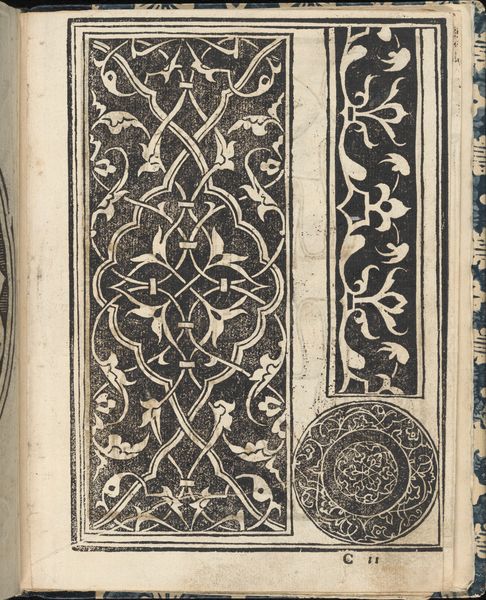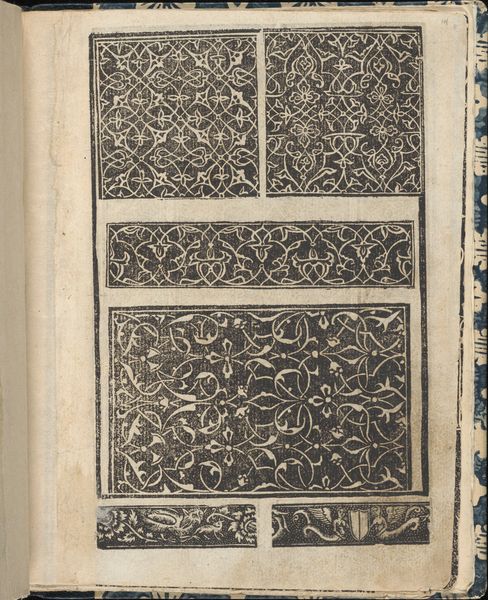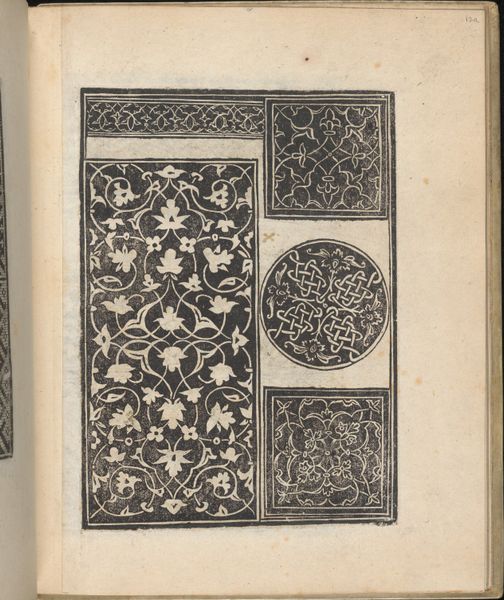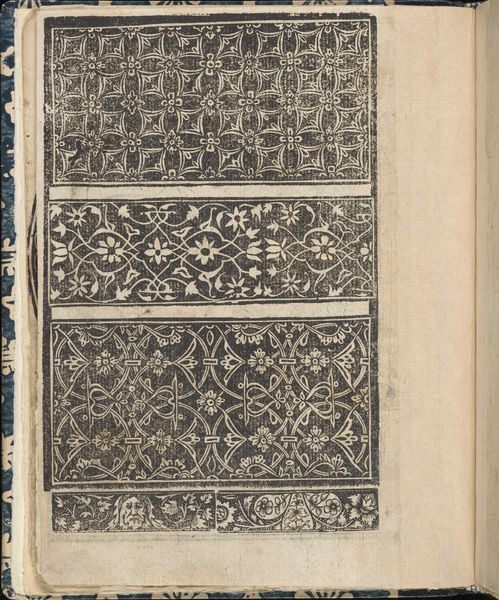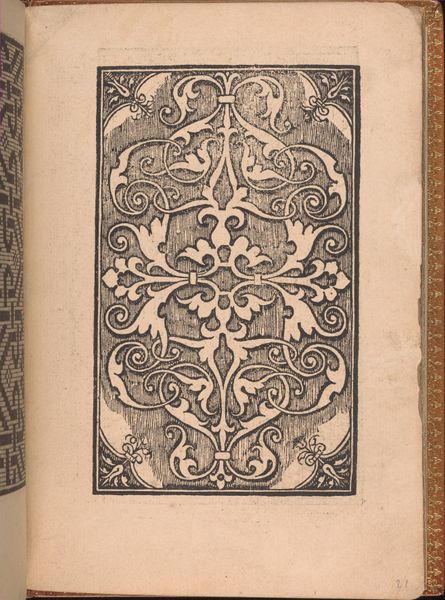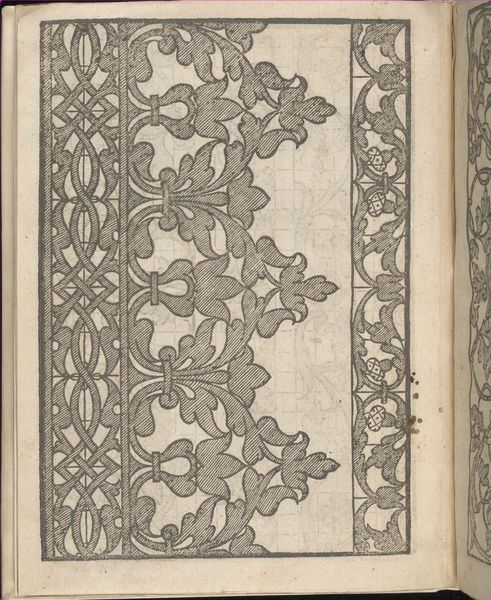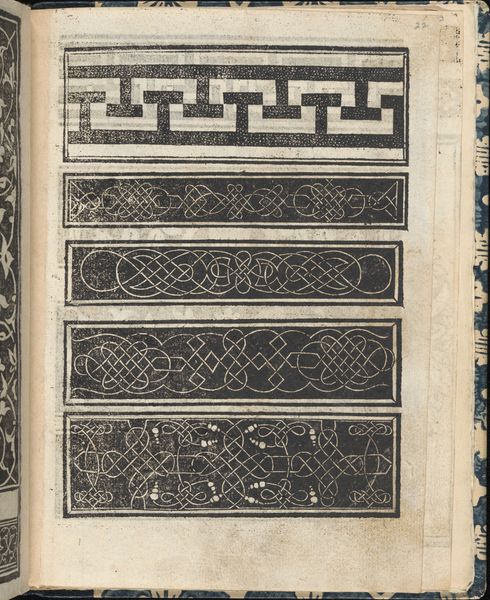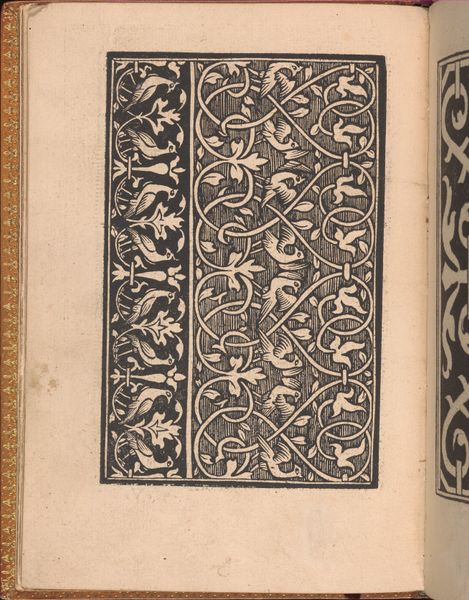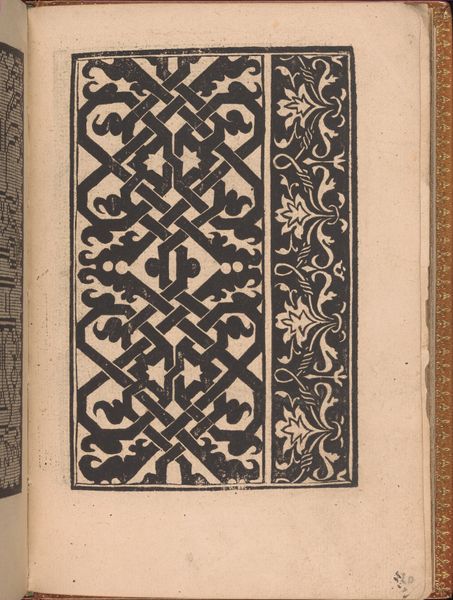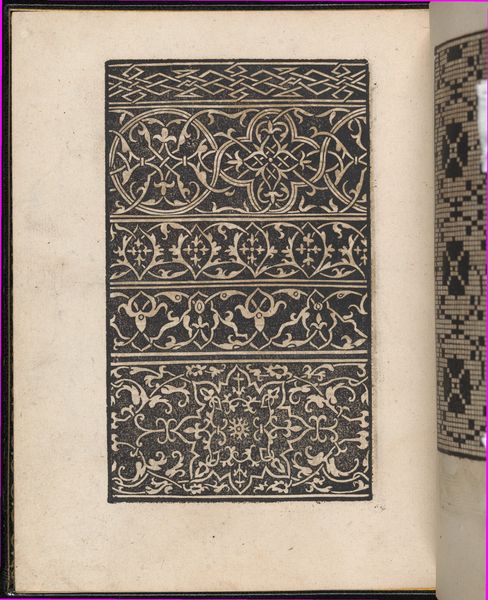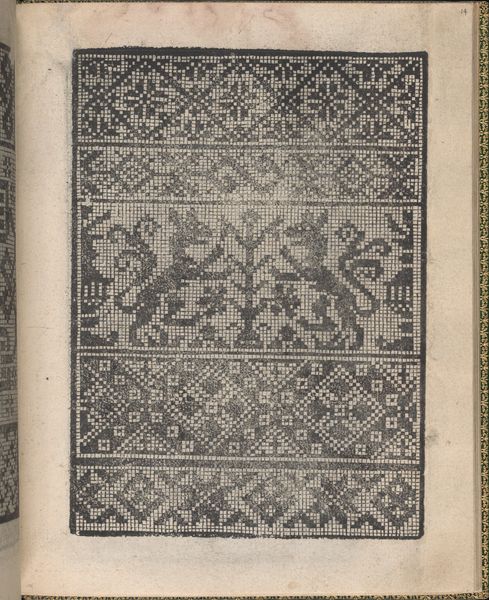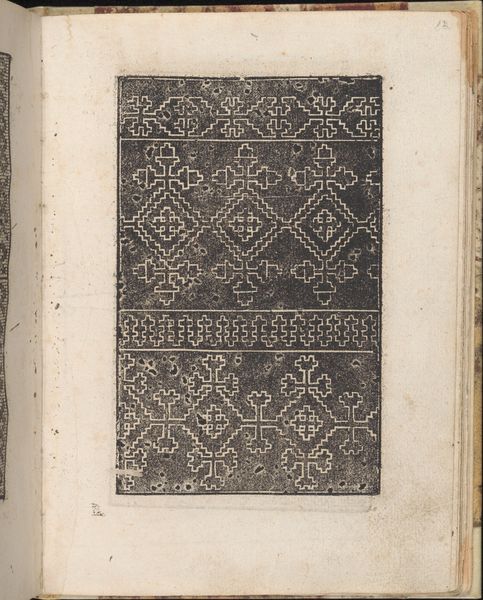
# print
#
form
#
geometric
#
line
#
decorative-art
Dimensions: Overall: 7 13/16 x 6 3/16 x 3/8 in. (19.8 x 15.7 x 1 cm)
Copyright: Public Domain
Curator: Oh, the weight of ages. This is page 21, verso, from "Essempio di recammi," a book of embroidery patterns published around 1530 by Giovanni Antonio Tagliente. It's a drawing and print, residing here at the Met. What strikes you about it? Editor: Initially? A sort of serene density. It reminds me of old carpets in forgotten rooms, patterns that breathe quietly even when no one's looking. The black and white, the tight compositions... it feels almost monastic. Curator: Monastic in its discipline, perhaps. But these patterns speak to a much wider world. They borrow heavily from Islamic art, geometric forms interwoven with floral motifs. This reflects the cross-cultural exchange happening in Renaissance Italy. Editor: I see that—a lovely dialogue across borders, cultures holding hands through stitchwork. Is it me, or are some of the designs, especially the interlocked circles, echoing Celtic knots? Curator: That's perceptive. There's a resonance, isn't there? Cultural memory works in mysterious ways. Forms echo and adapt. These patterns, presented as examples for embroidery, would then be interpreted and re-interpreted through countless hands. Editor: Each stitch, a whisper into the future. I imagine women, mostly, gathered, transforming these static lines into vibrant cloth. It's about function, beauty, transmission. Do you think Tagliente was aware of that legacy he was seeding? Curator: Undoubtedly. Pattern books weren’t just instruction manuals. They were cultural documents, disseminating ideas about beauty, status, even power. Owning such a book signaled refinement and access to a wider, interconnected world. The geometric abstraction would’ve been considered elegant. Editor: Thinking about the lives intertwined with this little page humbles me. The designer, the printer, the embroiderers... and now us, puzzling over its silent patterns centuries later. Curator: Indeed. Its patterns still speak—revealing continuity through visual symbols, shaped and reshaped. What a fascinating testament of a past. Editor: It almost demands one to reach out to weave some fabric, it truly demands to be transformed in the beauty again.
Comments
No comments
Be the first to comment and join the conversation on the ultimate creative platform.
